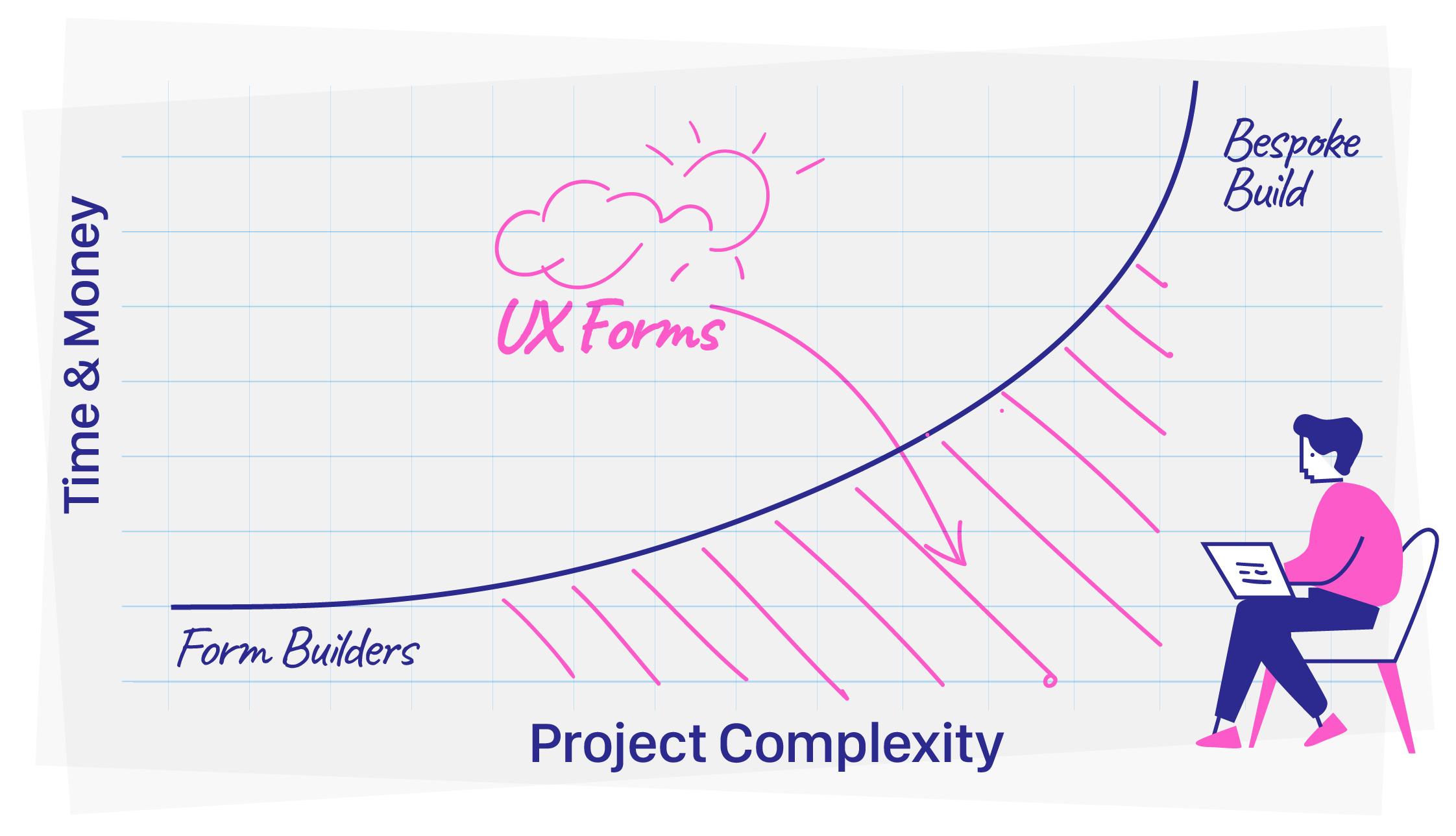Our Thinking Wed 3rd June, 2020
What is UX Forms, and how is it different (and better)?
To Build, or to Buy, that is the question…
In a recent blog post, Reda Hmeid talked about a common area for discussion when embarking on a new project for a client: “Should we buy, or should we build?”. Reda concluded that it’s rarely a question of build or buy – almost invariably it’s how best to build and buy.
Having talked about this principle in general terms, in this post we focus on the same question but for a specific component – forms.
Forms are a huge part of how we interact with the web. Sometimes it’s obvious (‘we’d love your feedback, please complete this questionnaire…’) but very often you won’t even be aware that you’re completing a form. Every time you log in, comment on a blog, send a tweet – almost any time you enter information into a web page, you’re actually completing a form.
Once a form has been designed, tested and implemented in an accessible way, something has to happen with information once it’s been provided by users – and whatever those actions are, they must be secure and reliable.
The business of deploying web forms is often highly complex, and due to their ubiquity in the market, they are essentially commodities. That is to say, building your own from scratch would be a lot of hard work, expensive, and full of nasty bugs you discover along the way – and ultimately, would never provide you with a lasting competitive advantage. Which is why the Equal Experts approach for this aspect of most client implementations is to buy rather than build. More specifically, it’s to buy UX Forms.
In this post, I’ll explain why.

The sweet spot
UX Forms is the product of a joint venture between myself and Equal Experts, which exists as a result of my time working at the Home Office, as a consultant. If ever there’s a clear need for sophisticated, secure, accessible and robust, webforms, it’s within Government departments. Based on my experiences, I was convinced the desired outcomes could be achieved in a smarter way.
UX Forms is an enterprise-ready cloud platform for webform development, which makes designing, publishing, monitoring and updating webforms (of all kinds) simple. There were other form-building tools of course, ranging between simple to forbiddingly technical. None of the existing solutions met the needs of the environment I was working in.
It makes sense for many clients to let a third party take on the burden of responsibility for ensuring 24/7 availability, presenting analytics, and providing high-levels of security – as well as providing ongoing support. That said, if a client’s needs are simple, predictable and stable there are WYSIWYG builders in abundance – easy for anyone to use, but limited when designing forms for complex scenarios.
But – if a client’s needs are complex, unpredictable and evolving – they typically face two choices: highly technical toolkits with the power to deploy sophisticated forms, but comprehensible only to a programmer; or bespoke builds from scratch. Even trying to adapt existing frameworks and libraries tends to become expensive and time-consuming.
That’s why we made sure that UX Forms is sophisticated enough to handle challenging scenarios, compliant when it comes to security and accessibility standards and intuitive to use – that, we believe, is the sweet spot.
Different, and better
UX Forms is a powerful toolset which takes care of the technology and functionality that’s common to any webform implementation: hosted; secure; easily tailored; fully customisable; test-ready; dynamic forms with seamless integration to websites and external systems. It also includes a comprehensive suite of built-in analytics.
But here’s where our original ‘build or buy’ question comes into play. Buying UX Forms doesn’t necessarily remove the need to build. What it actually does is enable the client to focus on building the logic that’s unique to them – the stuff that makes the organisation different, and better.
This could be anything – a distinctive customer interface or customer journey, special data processing routines – there’s no limit on what we can build on the back of UX Forms.
In my view, this is exactly where the concept of build and buy prompts the right questions – questions that are interesting and challenging – and helps us navigate towards where the most valuable answers are.
Click here to find out more and how UX Forms can help you.



